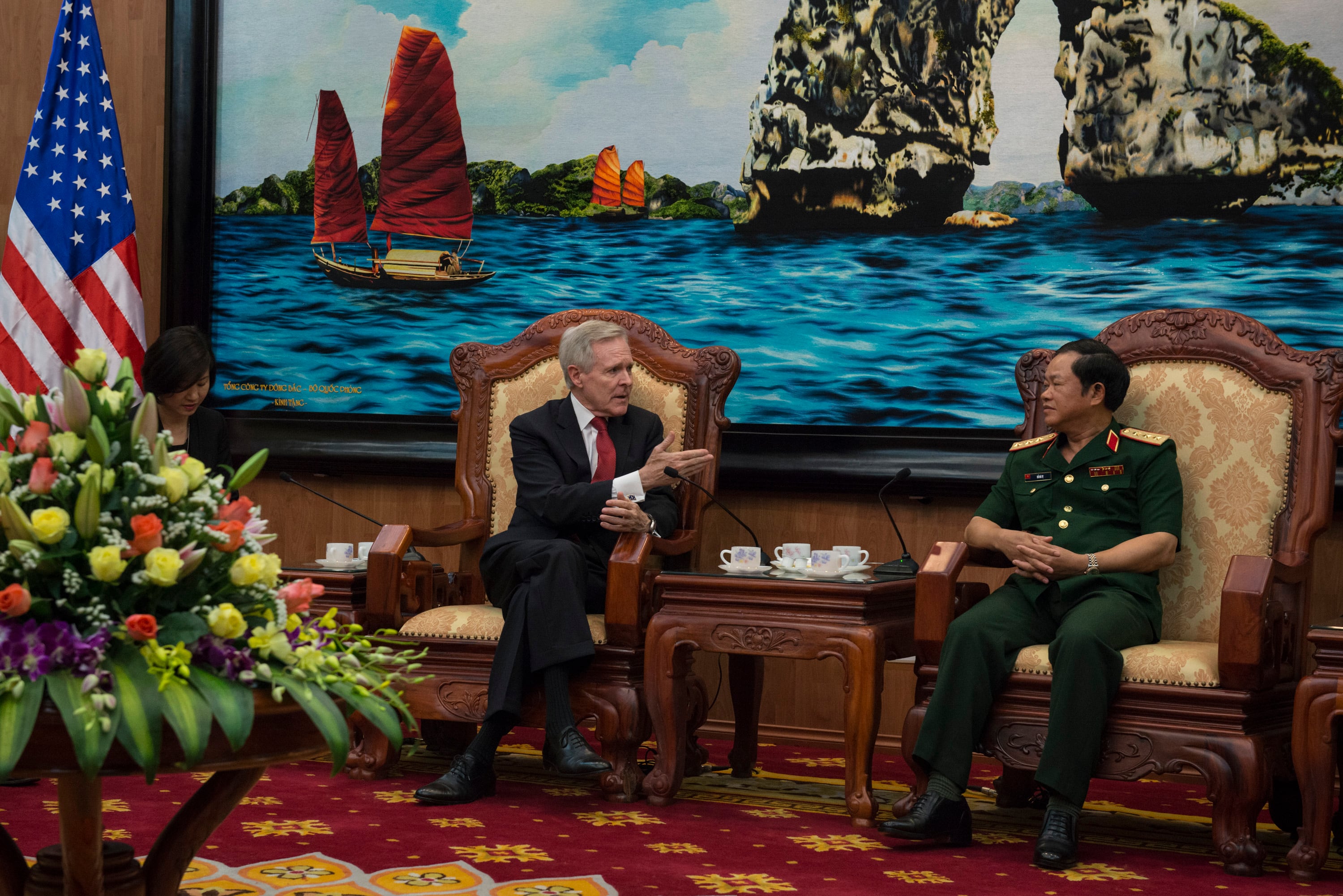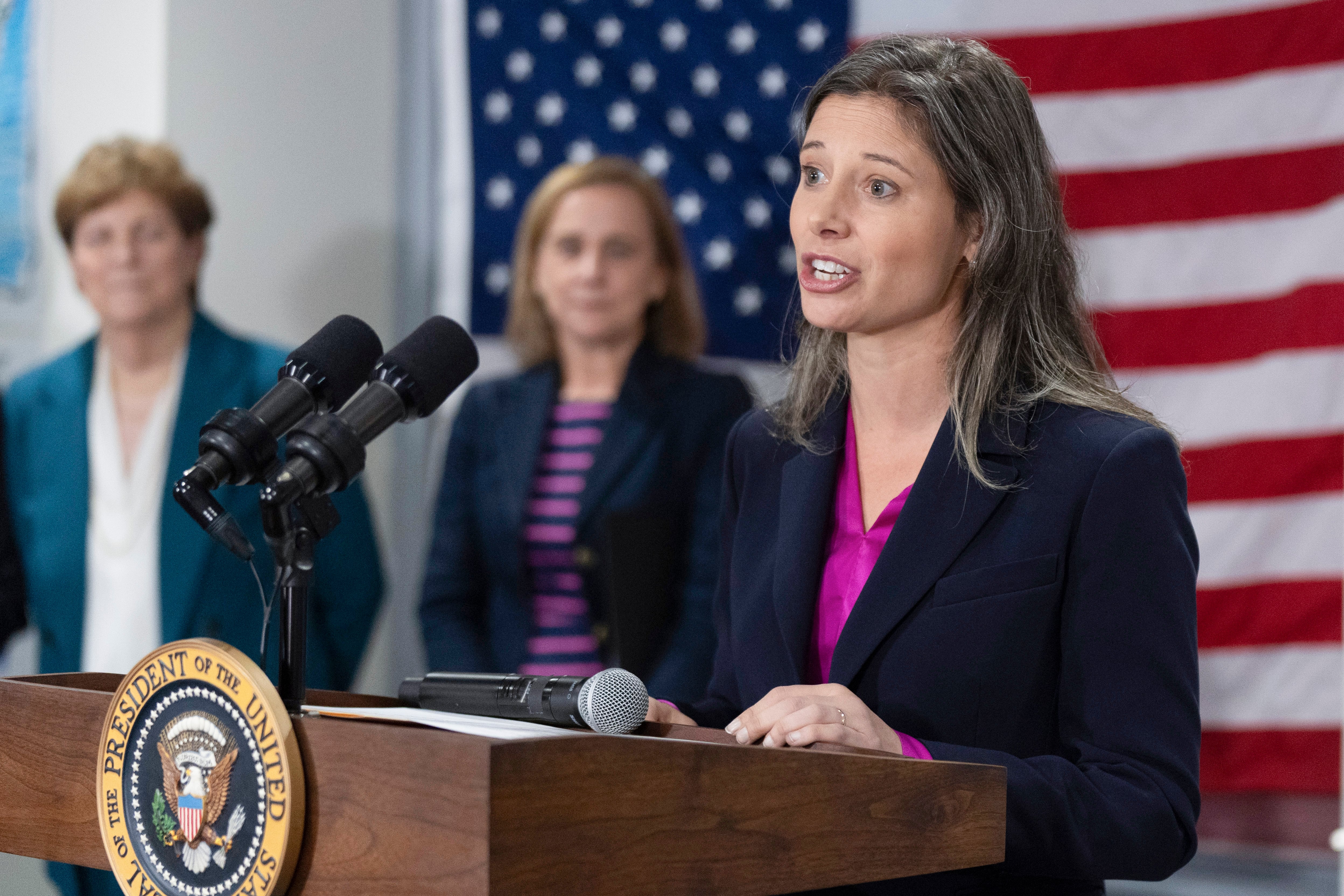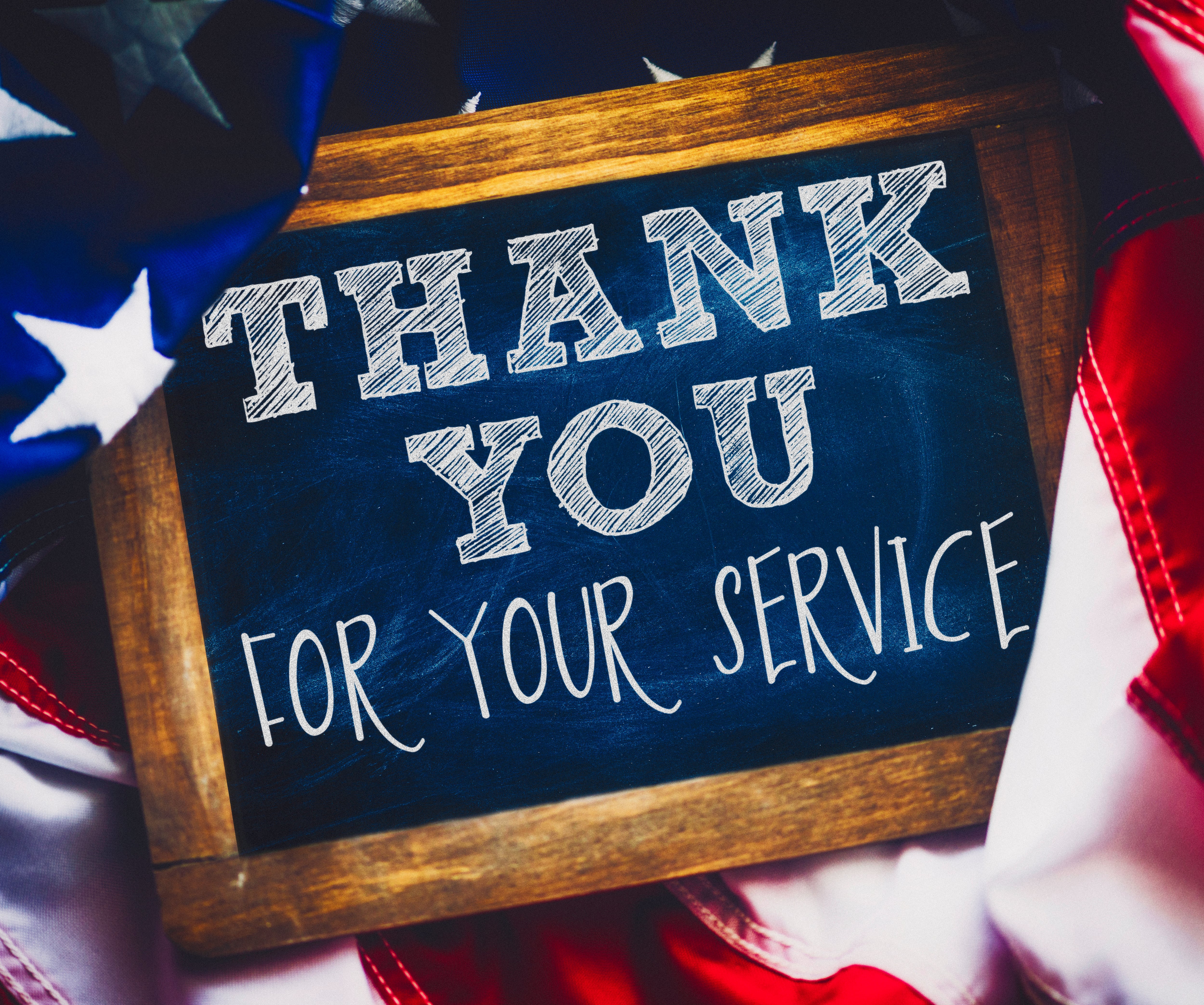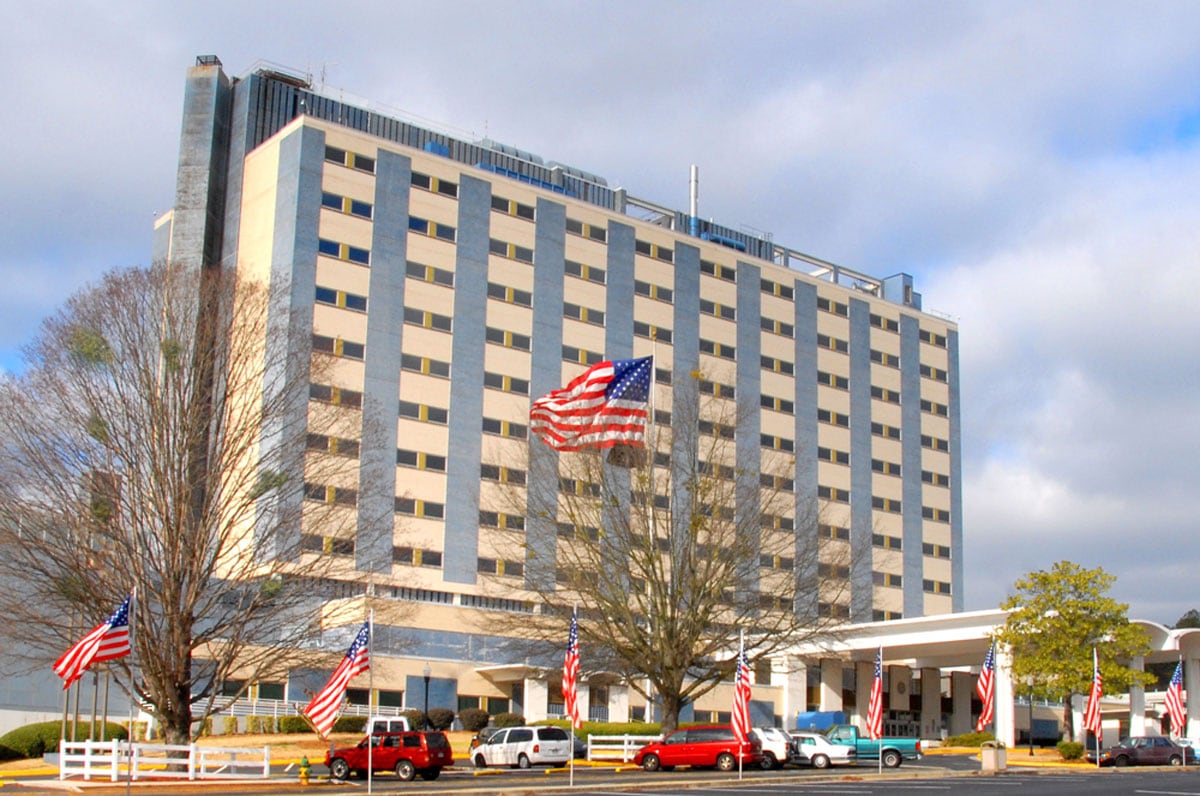When it comes to the hotly contested South China Sea region, the U.S. is seeking allies seeking finding love in unexpected places, even among erstwhile enemies.
With President Obama’s landmark announcement of the lifting of a half-century ban on lethal weapons sales to Vietnam, the stage is set for even deeper ties with America’s one-time adversary — and . And for sailors, that could mean more port visits for sailors.
The Navy ’stop brass have long sought to improve ties with Vietnam because of its location in the South China Sea — the communist nation shares a border with China and the Gulf of Tonkin is created by its northeastern coastline and China’s Hainan Island. In fact, the deepening military-to-military ties were the impetus for lifting the ban completely, Obama said.
"One of the things that has happened through this comprehensive partnership is a dialogue between the U.S. and Vietnamese military that we hadn't seen in a very long time," Obama said Monday in a press conference in Hanoi. "And we already have U.S. vessels that have come here to port, we expect that there will be deepening cooperation between our militaries, often times around, 'How do we respond to humanitarian disasters in this region?'"
Obama said more port visits are likely in the future as the countries work together on humanitarian assistance missions, but the U.S. was going to tread lightly.
"There may be occasions in which that means more U.S. vessels might visit but I want to emphasize that we will do so only at the invitation and with the full cooperation of the Vietnamese government, fully respecting their sovereignty and their sensitivities," he said.
During a visit to Washington in February, U.S. Pacific Command head Adm. Harry Harris put his support behind lifting a weapons ban and his support for getting more ships in for port visits.
"We do port visits in Vietnam and I advocate for more. I believe that we will be able to do more this year," Harris said in a March hearing before the Senate Armed Services Committee.
Harris said he saw an opportunity to grow the relationship with Vietnam and that he thinks the Vietnamese people would be receptive.
"I believe that we should improve our relationship with Vietnam," Harris said. "I think it's a great strategic opportunity for us and I think the Vietnamese people would welcome the opportunity to work closer with us as their security partner of choice."
The Navy conducted four port visits in Vietnam in 2015, a U.S. Pacific Fleet spokesman said. The destroyer Fitzgerald and the littoral combat ship Fort Worth, along with the expeditionary fast transport ship Millinocket and the hospital ship Mercy, all made visits to Da Nang, Vietnam, last year Lt. Cmdr. Matt Knight said in an email.
These deepening ties will lead to head of the Pacific Fleet told Navy Times May 6 that he foresaw deepening ties with Vietnam leading to more port visits in the near future, the head of the Pacific Fleet said.
"I just finished a visit to Vietnam and they are very receptive," Adm. Scott Swift said in a May 6 interview, referring to a March trip. "As Adm. Harris said, we are looking forward to increasing that spectrum of engagement."
PACFLT would not comment on upcoming port visits were scheduled for this year, but said there is much on the horizon for navy-to-navy relations with Vietnam.
"We do not disclose specific information on upcoming port visits this far out," Knight said. "However, the U.S. Navy is planning on conducting the Naval Engagement Activity and Pacific Partnership visits to Vietnam again this year."
"Additionally, Admiral Swift traveled to Vietnam this year, we participated in the 6th annual Navy-to-Navy Talks, and they have been invited to observe the Rim of the Pacific exercise."
Cam Ranh Bay
One of the features that excites Navy planners the most is having more access to port facilities in Vietnam’s Cam Ranh Bay, widely held as one of the finest deep-water ports in Southeast Asia. A new international port that opened in March will yieldis opening some opportunities for more navy-to-navy engagements with Vietnam, Swift told Navy Times.
The bay, which has a relatively narrow inlet that leads to in and out of the South China Sea, can be easily defended. The U.S. used it during the Vietnam War until about 1972 and the Soviet Union had a large base there for decades before Russia left for good in 2002.
But while Russia has officially departed, it still has a cozy relationship with Vietnam’s communist leaders government, which makes the U.S. uncomfortable. Vietnam is building their submarine fleet out with six Kilo-class diesel electric boats that it bought from Russia in 2009. It is Vietnam confirmed in 2015 that it is patrolling the South China Sea with its new boats.
But while US Naval planners have long lusted after the strategic port, said Jerry Hendrix, a retired Navy captain and expert at the Center for a New American Security.
"Cam Ranh Bay is a crucial port in the region that strategic planners have missed since the day we left," said Jerry Hendrix a retired Navy captain and expert at the Center for a New American Security.
Former Defense Secretary Leon Panetta said in 2012 that "access for United States naval ships into this facility is a key component," of U.S.-Vietnam relations.

Navy Secretary Ray Mabus met with the Vietnamese chief of the General Staff in April 2015 to discuss partnership opportunities in Hanoi.
Photo Credit: MC2 Armando Gonzales/Navy
'Times change'
The increasingly close evermore cozy relationship between the once bitter foes U.S. and Vietnam is being eyed warily in Beijing, as China reinforces its is seeking to press itsclaims to nearly all of the South China Sea, claims that have sharply increased tensions between China and Vietnam.
Vietnam and China’s competing claims there in the South China Sea have led to bloodshed in the past. In 1974, a conflict between South Vietnam and China led to a shootout in the Paracel Islands, located between Vietnam and China's Hainan Island. That dispute continues.
Obama said the move to lift the U.S. ban on arms sales was not aimed at China but was to finally normalize relations with Vietnam after one of the most divisive conflicts in U.S. history.
"The decision to lift the ban has nothing to do with China or any other considerations," Obama said. "It was based on our desire to complete what has been a lengthy process of normalization with Vietnam."
The U.S. and Vietnam do share regional maritime security concerns, Obama said, alluding to China’s aggressive pursuit of claims in the South China Sea.
"Now there is a genuine mutual concern with respect to maritime issues and I've made no secret of that," he said. "It is important for us to maintain the freedom of navigation and the governance of international norms and rules and law that have helped to create prosperity and promoted commerce and peace and security in this region."
Michael O’Hanlon, an influential foreign policy expert at Brookings Institution, said that advancing relationships with countries in the region is an appropriate response to China’s actions, which include building man-made islands on rocks and reefs to further their claims to nearly all of the fish and minerals in the South China Sea. with disputed ownership.
"Being able to gradually ratchet up our pressure and our partnerships in the region is the optimal kind of proportionate response mechanism when China asserts itself," O'Hanlon said. "We don't need to fight, but we make it clear we aren't leaving. And the endgame will be a more militarized region in which, yes, China has more assets than before, but the United States does too, and even more to the point, the United States leads a coalition of like-minded states all of which are pushing back against Chinese territorial claims."
Navy experts agreed that deeper cooperation between the U.S. and Vietnam was important given the tenuous security in the region with China’s ongoing island building project raising tensions.
"I think it’s a good idea, times change and we’ve got to adjust with the times," said retired Adm. Robert Natter, a highly decorated Vietnam War veteran and former U.S. 7th Fleet commander. "We have more in common with Vietnam today than separates us, at least on a strategic level.
"The reality is the geography would indicate that a closer relationship would be appropriate. Especially with the actions of the Chinese in the South China Sea."
Bryan Clark, a retired submarine officer and defense analyst former senior aid to Chief of Naval Operations Adm. Jon Greenert, said China is likely to be anxious about recent U.S. moves in the region, including dispatching more rotational forces to be deployed to the Philippines and now closer ties with Vietnam.
"Now you've got both sides of the South China Sea bracketed by increased U.S. military involvement on the ground in the region," Clark said.
David B. Larter was the naval warfare reporter for Defense News.





